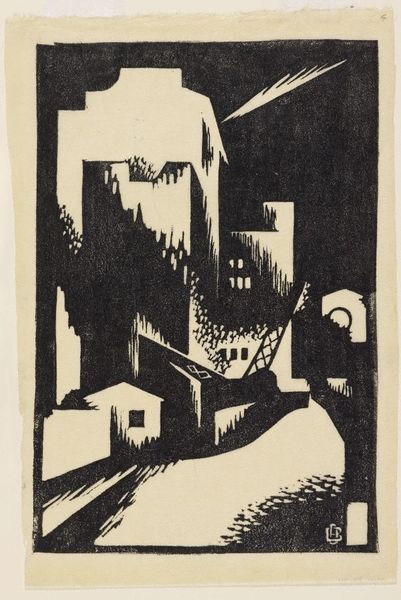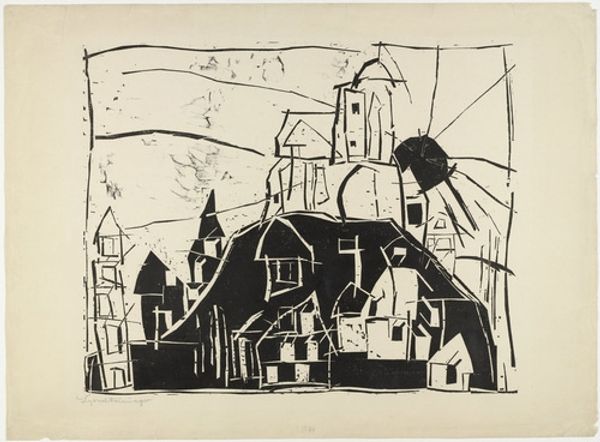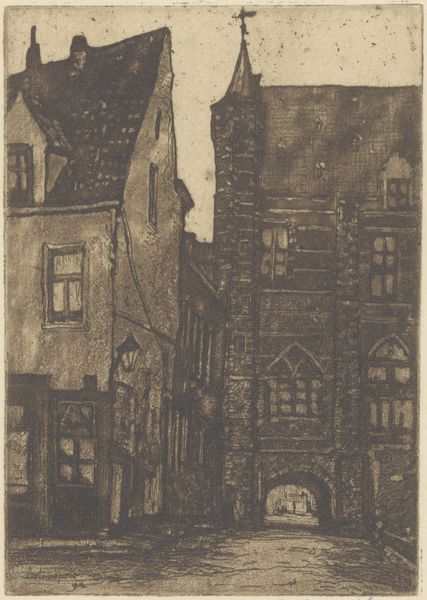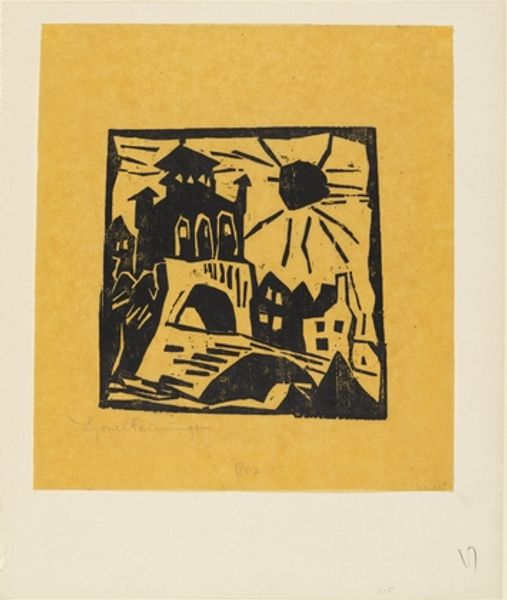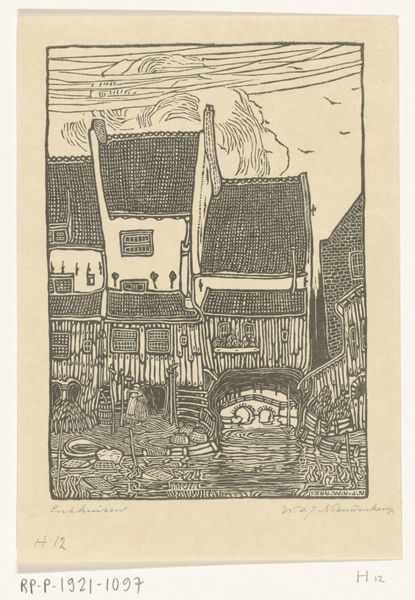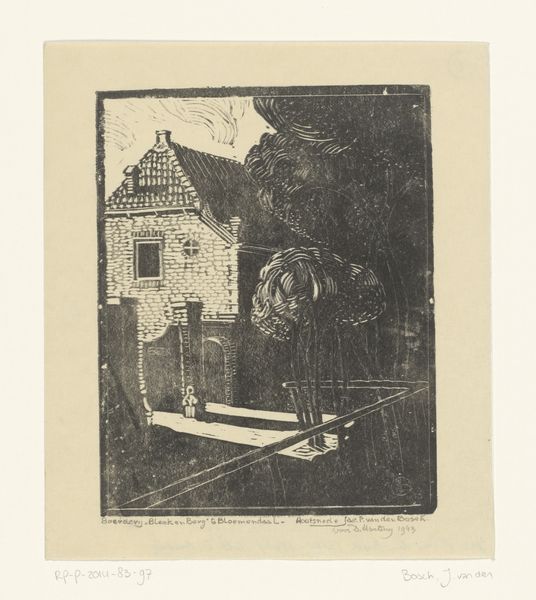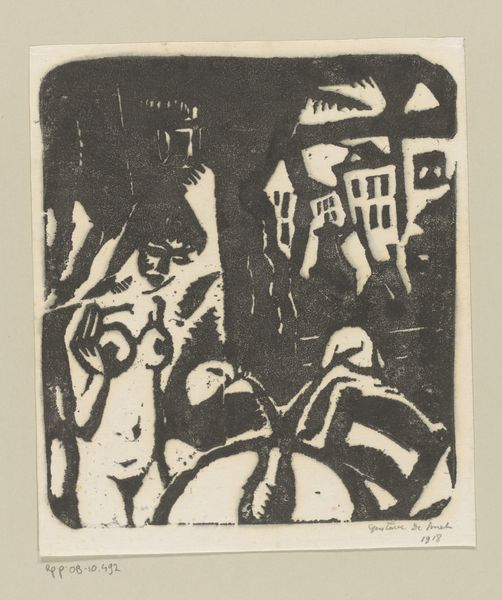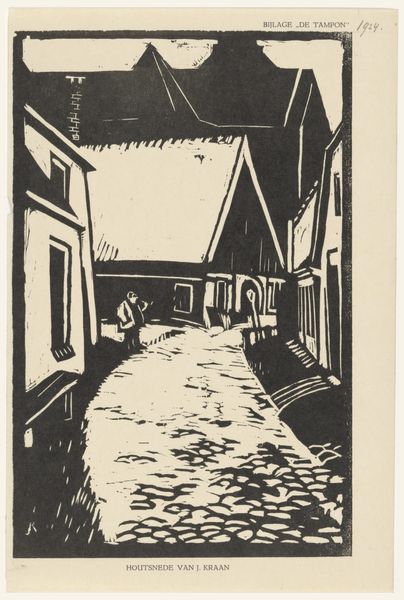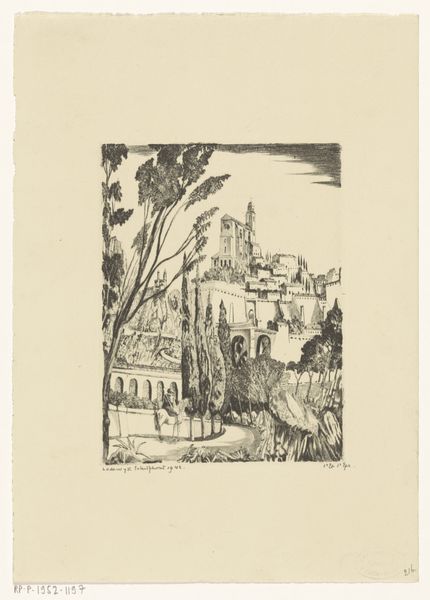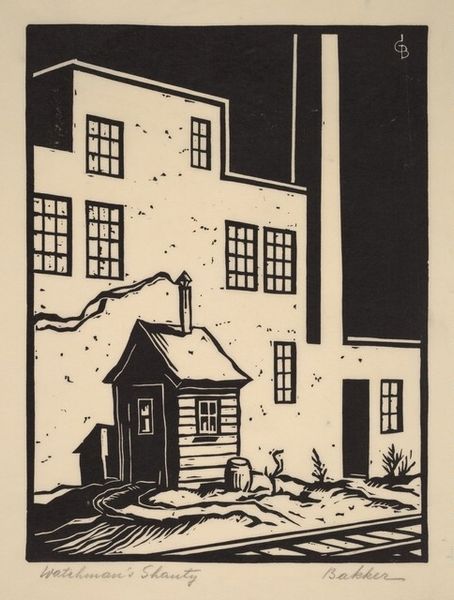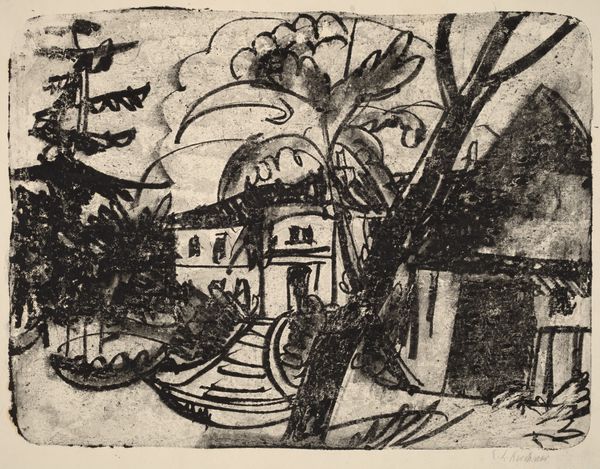
print, woodcut
# print
#
landscape
#
german-expressionism
#
expressionism
#
woodcut
#
cityscape
Copyright: Public domain
Curator: Christian Rohlfs’ "Street in Soest," crafted in 1911, is a stark yet fascinating example of early German Expressionist woodcut. Editor: It’s striking, isn't it? The strong contrast—the absolute black and white—gives it a kind of graphic novel feel, a bit menacing even. The skewed perspectives definitely add to that unease. Curator: The woodcut technique itself plays a crucial role here. Rohlfs intentionally used the medium's limitations—the crude, direct carving—to heighten the expressive impact. The labor involved in carving the wood block gives us a clear indication of the artistic effort, transforming a traditional craft into a bold declaration. Editor: Absolutely. Considering the time, just before the conflagration of WWI, it feels almost prophetic, channeling a deeper sense of social disruption and unease that characterized the era. The almost aggressive distortion of the architecture could reflect anxieties about the changing societal landscape. Curator: Indeed, and the physical act of carving the wood is telling; the process echoes the period’s turn towards simplifying the industrial process. The sharp, angular forms—were not made with ease, they were forced. Rohlfs highlights the capabilities of basic manual practice while presenting an artistic view of city life at the time. Editor: You can really see that reflected in the figures included as well, they seem like small components within an enormous mechanism. The lack of detail makes it challenging to really know what roles or classes they belong to. Are they tourists or simply people living in the space? Curator: It makes you consider how the industrial and societal changes impacted everyone, down to the working class who built those very buildings, with little detail to show for themselves within a grand environment. Editor: Well, "Street in Soest" gives us a fascinating window into a pivotal moment in both art history and European history. A collision of technique, class, and societal views are very clear within it. Curator: Precisely, by dissecting the raw materiality and labor woven into "Street in Soest," we gain a sharper perspective on its complex relationship with German Expressionism and its setting.
Comments
No comments
Be the first to comment and join the conversation on the ultimate creative platform.
